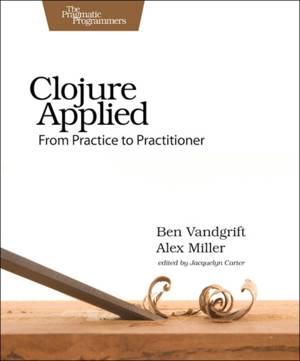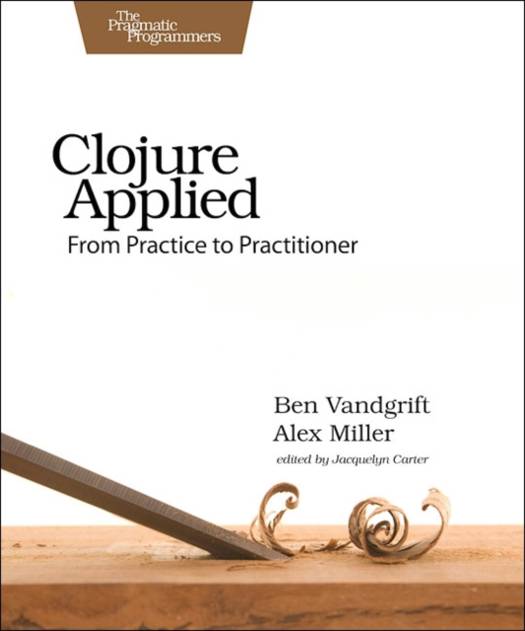
- Afhalen na 1 uur in een winkel met voorraad
- Gratis thuislevering in België vanaf € 30
- Ruim aanbod met 7 miljoen producten
- Afhalen na 1 uur in een winkel met voorraad
- Gratis thuislevering in België vanaf € 30
- Ruim aanbod met 7 miljoen producten
Zoeken
€ 54,95
+ 109 punten
Omschrijving
Think in the Clojure way! Once you're familiar with Clojure, take the next step with extended lessons on the best practices and most critical decisions you'll need to make while developing. Learn how to model your domain with data, transform it with pure functions, manage state, spread your work across cores, and structure apps with components. Discover how to use Clojure in the real world, and unlock the speed and power of this beautiful language on the Java Virtual Machine.
Clojure Applied gives you the practical, realistic advice and depth of field that's been missing from your development practice. You want to develop software in the most effective, efficient way possible. This book gives you the answers you've been looking for in friendly, clear language.
Dive into the core concepts of Clojure: immutable collections, concurrency, pure functions, and state management. You'll finally get the complete picture you've been looking for, rather than dozens of puzzle pieces you must assemble yourself. First, explore the core concepts of Clojure development: learn how to model your domain with immutable data; choose the ideal collection; and write simple, pure functions for efficient transformation. Next you'll apply those core concepts to build applications: discover how Clojure manages state and identity; spread your work for concurrent programming; and create and assemble components. Finally, see how to manage external integration and deployment concerns by developing a testing strategy, connecting with other data sources, and getting your libraries and applications out the door.
Go beyond the toy box and into Clojure's way of thinking. By the end of this book, you'll have the tools and information to put Clojure's strengths to work.
What You Need:
To follow along with the examples in the book, you will need Clojure 1.6, Leinegen 2, and Java 6 or higher.
Clojure Applied gives you the practical, realistic advice and depth of field that's been missing from your development practice. You want to develop software in the most effective, efficient way possible. This book gives you the answers you've been looking for in friendly, clear language.
Dive into the core concepts of Clojure: immutable collections, concurrency, pure functions, and state management. You'll finally get the complete picture you've been looking for, rather than dozens of puzzle pieces you must assemble yourself. First, explore the core concepts of Clojure development: learn how to model your domain with immutable data; choose the ideal collection; and write simple, pure functions for efficient transformation. Next you'll apply those core concepts to build applications: discover how Clojure manages state and identity; spread your work for concurrent programming; and create and assemble components. Finally, see how to manage external integration and deployment concerns by developing a testing strategy, connecting with other data sources, and getting your libraries and applications out the door.
Go beyond the toy box and into Clojure's way of thinking. By the end of this book, you'll have the tools and information to put Clojure's strengths to work.
What You Need:
To follow along with the examples in the book, you will need Clojure 1.6, Leinegen 2, and Java 6 or higher.
Specificaties
Betrokkenen
- Auteur(s):
- Uitgeverij:
Inhoud
- Aantal bladzijden:
- 240
- Taal:
- Engels
Eigenschappen
- Productcode (EAN):
- 9781680500745
- Verschijningsdatum:
- 6/10/2015
- Uitvoering:
- Paperback
- Formaat:
- Trade paperback (VS)
- Afmetingen:
- 190 mm x 235 mm
- Gewicht:
- 417 g

Alleen bij Standaard Boekhandel
+ 109 punten op je klantenkaart van Standaard Boekhandel
Beoordelingen
We publiceren alleen reviews die voldoen aan de voorwaarden voor reviews. Bekijk onze voorwaarden voor reviews.











